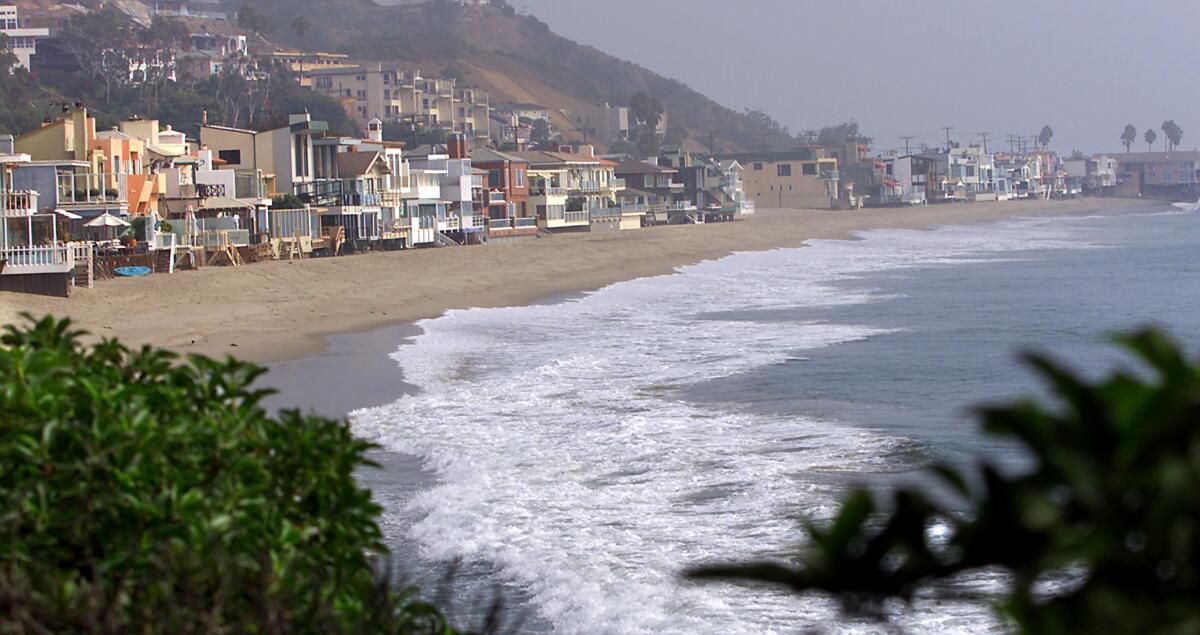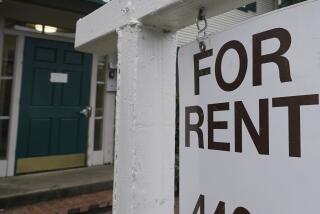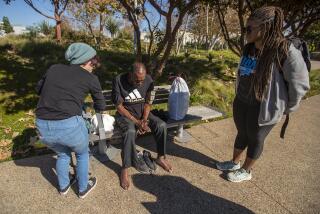Opinion: Malibu can’t pass off guesthouses as low-income housing

- Share via
A judge’s recent ruling that the city of Malibu couldn’t count guesthouses toward its state-mandated plan for low-income housing came as something of a shock. Who knew Malibu was even required to think about low-income housing? Not much, mind you — just 188 units of low-income and very low-income housing, as determined by the Regional Housing Needs Assessment, which is overseen by the Southern California Assn. of Governments (which goes by the dreadful acronym SCAG.) The city counted 30 of those “second units” (essentially a second fully-equipped residence near the main house on a property) as available for rent by people with low incomes.
What a great scenario for a TV sitcom: “A once homeless man who lost his job at a carwash during the recession rents a guesthouse from a powerful movie studio chief. Zany adventures ensue.”
Except it wasn’t quite working that way, L.A. County Superior Court Judge Richard L. Fruin Jr. found. “There is no evidence … that second units in Malibu are available to be rented for low and very low income occupancy.” Turns out, according to a survey that the city included in its Housing Element plan, most of those units are lived in rent-free and the rest are rented at market rates (far out of reach of low-income folks.)
The rent-free guesthouses appear to go mostly to family members or the help. That’s not a bad thing, in and of itself. Why not let the nanny or the housekeeper live in the guesthouse? They are unlikely to be able to afford market-rate rents in Malibu near the homes in which they are working. But that doesn’t satisfy the city’s housing obligation under the law. “Housing stock that is made available only to family members or domestic employees does not qualify as low income housing, because, first, such housing is not offered on the public rental market,” Fruin wrote.
The judge ordered the city to revise its housing plan.
And that could help the developer, Trancas PCH, which filed the lawsuit that lead to this ruling. Trancas has 30 acres of property — fronting Pacific Coast Highway at Trancas Canyon Road — on which it wanted to build housing that would include units for low-income residents as well as market-rate units. In exchange, the developer wanted a density bonus. But the city declined to consider the property as part of its Affordable Housing Overlay Zone — a group of three parcels to which the city would award density bonuses. The city calculated that the parcels could yield 158 of the 188 low-income units it needs. The other 30, of course, the city said were covered by those guesthouses. But Fred Gaines, the lawyer representing the Trancas PCH developers, said his client is the only property owner actually proposing to build any low-income units.
Malibu city officials haven’t made clear what they will do next. Will they change the Housing Element? Will Trancas get its shot at developing low-income housing? Will low-income folks pay rent to live in guesthouses at beachfront mansions? Maybe this isn’t a sitcom yet, but it certainly has the makings of a long-running soap opera. And that’s not good. L.A. County desperately needs housing for low-income and very low-income households. Here is a developer who actually wants to build some of those units. No one is trying to build Jordan Downs-Malibu. And considering the hills, wetlands and the fact that the entire city lies in the Coastal Zone, there are tough restrictions on what can be built. But whatever city officials decide, they should get on with fulfilling that housing mandate.
Follow the Opinion section on Twitter @latimesopinion
More to Read
A cure for the common opinion
Get thought-provoking perspectives with our weekly newsletter.
You may occasionally receive promotional content from the Los Angeles Times.







